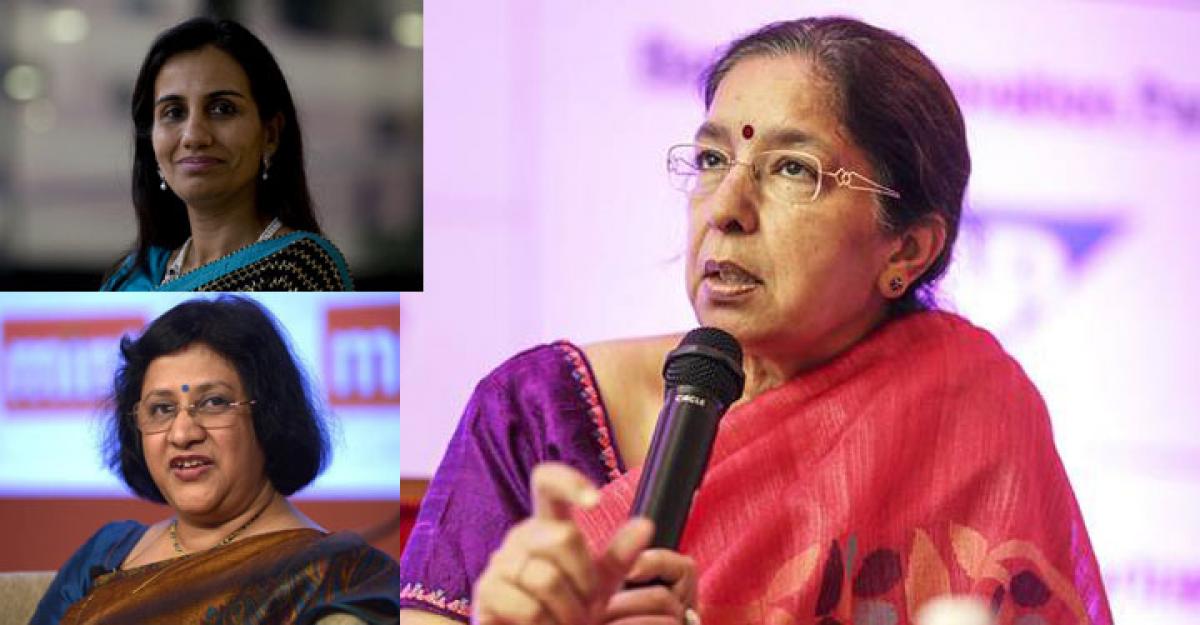Live
- Rajadhiraaj: Love. Life. Leela
- Students immerse in nature in Chilkur forest
- Sri Aurobindo’s vision: Bridging the gap for holistic human evolution
- Sri Radha Govinda Ratha Yatra conducted
- A feast of music, dance and drama
- Mohan Babu denies absconding amid legal controversy
- Swift City to boost industrial growth in Bengaluru
- Allu Arjun walks out free after spending night in jail
- Congress harbours no grudge against any actor: TPCC chief
- Allu Arjun meets Upendra after release from prison, wishes for his ‘UI’ film
Just In

The appointment of Zarin Daruwala as chief executive of Standard Chartered’s India operations this week is the latest in a series of appointments of women to top spots in the country’s banking sector. Daruwala joins Shikha Sharma, who is managing director and CEO of Axis Bank, and Chanda Kochhar, CEO of ICICI Bank.
The appointment of Zarin Daruwala as chief executive of Standard Chartered’s India operations this week is the latest in a series of appointments of women to top spots in the country’s banking sector. Daruwala joins Shikha Sharma, who is managing director and CEO of Axis Bank, and Chanda Kochhar, CEO of ICICI Bank.

The list doesn’t end there. The State Bank of India appointed its first chairwoman, Arundhati Bhattacharya, in 2013 and Morgan Stanley and Bank of America Merrill Lynch also have women at the helm in India.
Standard Chartered’s Daruwala is a chartered accountant who joined ICICI Bank in 1989 and worked in project finance and corporate banking, according to information on ICICI’s website, before becoming head of wholesale banking. India still has some way to go before achieving gender equality in boardrooms. Women make up just 7% of seats on boards of publicly traded companies, and just 11% of firms have female participation in ownership, according to the World Economic Forum’s 2015 Gender Gap report released this week.
India scored 3.3 on a survey which measured people’s perceptions of the ability of women to rise to positions of leadership, with a score of one being the worst, and seven being the best. Rwanda scored highest at 6.1, while Norway and Iceland scored 6. The US scored 5.1 in the survey, the results of which were included in the WEF’s report, according to a report in The Wall Street Journal.
So, in such an environment how have women been able to take up high-profile top positions in banks?
Arun Duggal, chairman of ICRA credit-rating service and founder of the Women on Corporate Boards mentoring programme, said he thinks it is because banks “have just made sure that women are not at a disadvantage.”
The result, in his opinion, is that women stick around. “So that the pool of women migrating up to the management level is more than at organizations that haven’t helped women” at the early stages of their careers, he said. (Source: WSJ)

© 2024 Hyderabad Media House Limited/The Hans India. All rights reserved. Powered by hocalwire.com







